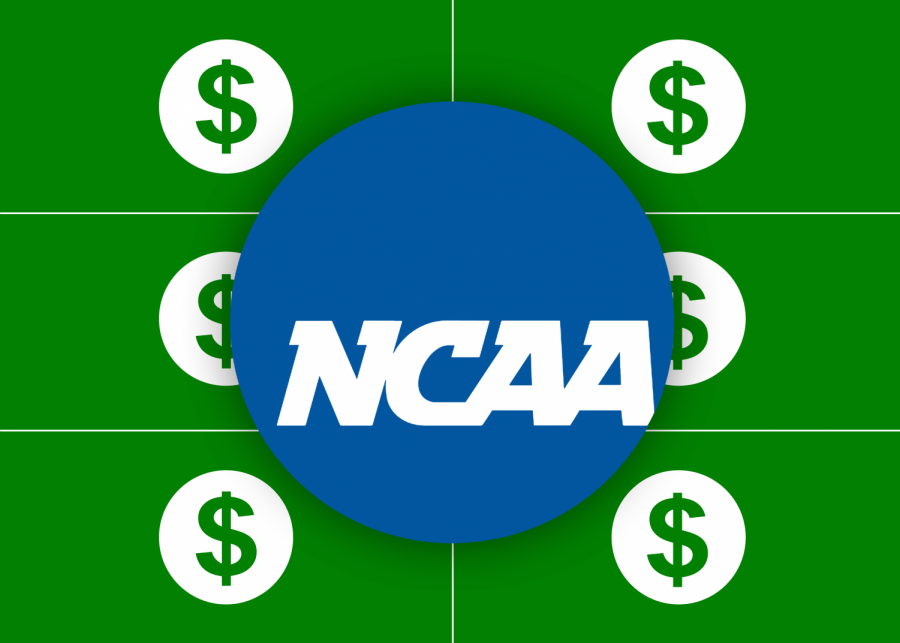Beyond the Bison: The money hidden in NCAA college athletics
November 30, 2017
The National Collegiate Athletic Association (NCAA) was founded in 1906 with the purpose of regulating the world of collegiate sports. The “non-profit” organization seeks to mediate what is appropriate when it comes to the relationship between athletes and Division 1, 2, and 3 schools.
The NCAA has established a stringent rule book of regulations and is known for stomping on any scandal or issue that may arise. The foundation has gone so far as to penalize teams and coaches for receiving a meal after scheduled practice times, a simple gesture turned wrong.
Perhaps the most prevalent restriction in today’s sports community deals with the role of amateurism. The NCAA states that athletes are ineligible to compete in their respective sports if they are making a profit off of their athletic abilities, which means that they would be considered professional athletes and not amateur athletes.
It is here where the grey area is revealed. Facing a full-fledged FBI investigation, the NCAA recently came under fire concerning the way in which it deals with financial matters beyond college athletics.
Specifically, in the world of men’s college basketball, bribery and manipulation skews the sport. The recent investigation uncovered phone calls between major assistant coaches, sports agents, and financial advisors concerning the status of potential high school recruits.
In a Nov. 22 article by the Washington Post, Sally Jenkins wrote, “Since 2010, the NCAA tournament rights fees have geysered from $550 million to $770 million to over $1 billion in deals with CBS and Turner, while ad sales for the networks have soared from $598 million to $1.24 billion.”
All of this money comes solely from basketball and does not take into account other high-performing college franchises like football nor major women’s sports programs.
Athletes themselves never see the money made off of their abilities, so where are all these profits going? Here we can connect amateurism to middle men to the NCAA.
For an athlete to compete in college sports, they cannot receive payment. Yet middle men, like major shoe corporations and assistant coaches, conspire to partner with recruits in an attempt to boost athletic wear profits. A valued recruit wearing a particular brand serves not only to satisfy the coaching staff in terms of exceptional play, but additionally, the company brand on the athlete’s jersey. Ultimately, profits coming from a supposed “amateur” athlete are funneled conveniently to the NCAA.
While many have chosen to blame the assistant coaches, often times it is the higher up administrators and coordinators who control the financial decisions. With so many people involved, it is no wonder the NCAA has found such success.
Regardless of personal opinions regarding whether or not college athletes should be paid, it seems absurd to have such a cash flow behind an organization that was supposedly formed to prevent such actions.
Who is responsible for fixing this problem? The NCAA president? The President of the United States? If the latter were the case, it would not be the first time a U.S. president intervened in the realm of athletics. For instance, Teddy Roosevelt pushed reform for improvements in football safety in 1905.
It seems like government intervention may not be in the best interest of the sports community. With this being said, perhaps a sort of check and balances system should be adopted within the NCAA organization to ensure that matters are sorted out legally and ethically.
For now, athletes, coaches, and administrators alike will simply have to work in a system plagued with these constant penalties.






















